The iPhone 6 Review
by Joshua Ho, Brandon Chester, Chris Heinonen & Ryan Smith on September 30, 2014 8:01 AM EST- Posted in
- Smartphones
- Apple
- Mobile
- iPhone 6
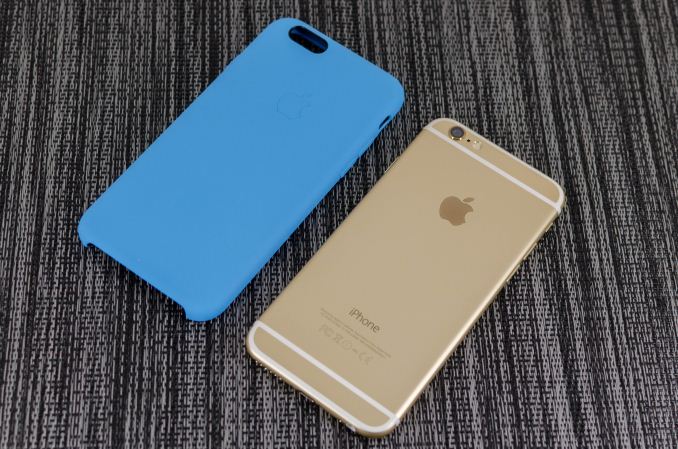
With every launch of the iPhone, Apple seems to have everything to lose and not much to gain. Apple’s iPhone line accounts for the majority of profits in the smartphone space, and as the smartphone market marches towards maturity it seems inevitable that companies like Xiaomi will be able to deliver largely similar experiences at much lower prices. The same once happened with Apple in the days of the PC industry where Apple approached irrelevance. Yet generation after generation, Apple seems to be able to hold on to a majority of profit share, and they’ve managed to tenaciously hold on to their first-mover advantage.
This brings us to the iPhone 6. This is now the eighth generation of the iPhone, and the fifth generation of the iPhone’s industrial and material design. We should note right now that this review is specifically for the iPhone 6; for the iPhone 6 Plus, please see our iPhone 6 Plus companion review. At this point, it’s not really possible to revolutionize the smartphone, and on the surface, the iPhone 6 seems to be directly inspired by the iPod Touch. However, instead of the chamfered edge where the display meets the metal unibody we see a continuous curve from the sloping glass to the metal unibody that looks and feels great. While the M8 was one of the best phones for in-hand feel, the iPhone 6 goes a step further due to the reduced weight and rounded side. I've always felt like the HTC 8X had one of the most compelling shapes for a phone, and the incredibly thin feel of the iPhone 6 definitely reminds me of that.
Along the left side, we see the standard volume buttons and mute switch that continue to have the same solid feel and clean clicking action. As I discuss in the iPhone 6 Plus review, going by Consumer Reports' data it seems that there is a weak point near the bottom of the volume rocker, although it's far less likely to be an issue on the iPhone 6 due to its smaller size. Along the top, there isn’t a power button because it’s been moved to the right side of the phone so there’s nothing notable on the top.
On the right side, we see the previously mentioned power button and also the SIM tray, which is ejected by inserting a pin into the eject hole. Similarly to the volume buttons, the power button has a solid feel that gives a distinct click when triggered and continues to be quite unique when compared to phones other than recent iPhones.
The bottom has the Lightning connector, speaker, a microphone, and 3.5mm headset jack. The placement and design of all these elements are largely similar if not shared directly with the iPod Touch.
The back of the phone continues to share elements from the iPod Touch. The camera, microphone, and LED flash are almost identical in their appearance, even down to the camera hump’s design. The LED flash does look different to accommodate the second amber flash, but the shape is identical. The only real difference is that the antennas of the iPhone 6 are the metal pieces on the top and bottom, with the associated plastic lines instead of a plastic RF window.
The front of the phone is decidedly more similar to the iPhone 5s though, with the Touch ID home button. While the earpiece hasn’t moved, it seems that the front facing camera has been moved back to the left side of the earpiece, and the sensors for light and proximity are now above the earpiece. For the most part, there’s not much to comment on here but after using the iPhone 6 for an extended amount of time I’m definitely sure that the home button is relatively closer to the surface of the display glass than before. In addition, the home button has a dramatically improved feel, with short travel, clean actuation, and a reassuring click in most cases.
Overall, while I was undecided at the launch of the iPhone 6 I definitely think the look of the new iPhone has grown on me. The camera hump’s accent serves as an interesting design touch, and the feel of the design is definitely much more comfortable and ergonomic than before. I’m not really sure that the extra reduction in thickness was necessary, but it does make for a better first impression. In the launch article I was a bit surprised that Apple chose to have a camera hump but given the fact that the iPod Touch has the same design it seems that there is precedent for such a move. I personally feel that the design wouldn’t be worse by increasing thickness to eliminate the hump and improve battery life as a result.
Apple has also introduced a new silicone case, which brings a lower price point than the leather cases. Surprisingly, this is a rather high quality case, and as far as I can tell it doesn’t carry any of the issues that silicone cases traditionally have. There’s a nice lip to make sure that the display glass doesn’t touch a surface if the phone is put face down, and the material doesn’t seem to stretch or attract pocket lint the way most silicone cases do.
There’s definitely a lot more to talk about though, and to get a sense of the major differences I’ve put together our usual spec table below.
| Apple iPhone 5s | Apple iPhone 6 | Apple iPhone 6 Plus | |
| SoC | Apple A7 | Apple A8 | Apple A8 |
| Display | 4-inch 1136 x 640 LCD | 4.7-inch 1334 x 750 LCD | 5.5-inch 1920 x 1080 LCD |
| WiFi | 2.4/5GHz 802.11a/b/g/n, BT 4.0 | 2.4/5GHz 802.11a/b/g/n/ac, single stream, BT 4.0, NFC | |
| Storage | 16GB/32GB/64GB | 16GB/64GB/128GB | 16GB/64GB/128GB |
| I/O | Lightning connector, 3.5mm headset | ||
| Size / Mass | 123.8 x 58.6 x 7.6 mm, 112 grams | 138.1 x 67 x 6.9 mm, 129 grams | 158.1 x 77.8 x 7.1 mm, 172 grams |
| Camera |
8MP iSight with 1.5µm pixels Rear Facing + True Tone Flash 1.2MP f/2.4 Front Facing |
8MP iSight with 1.5µm pixels Rear Facing + True Tone Flash 1.2MP f/2.2 Front Facing |
8MP iSight with 1.5µm pixels Rear Facing + True Tone Flash + OIS 1.2MP f/2.2 Front Facing |
| Price | $99 (16GB), $149 (32GB) on 2 year contract | $199 (16GB), $299 (64GB), $399 (128GB) on 2 year contract | $299 (16GB), $399 (64GB), $499 (128GB) on 2 year contract |
As you can see, this is a major release even at a high level. While the design might take some inspiration from the iPod Touch, the hardware is a completely different beast. There’s a new SoC, the A8; the iPhone 6 also includes a bigger and better display, newer WiFi module, bigger battery, and a better camera. Of course, there’s a lot more to the story of the iPhone 6 than a spec sheet. The first major difference that we’ll talk about is the SoC.


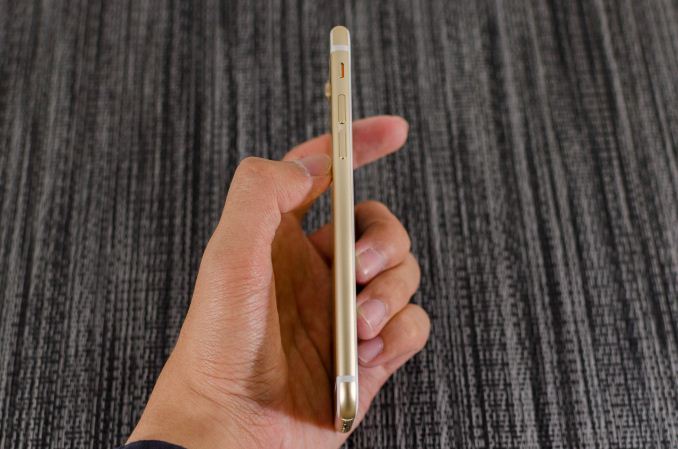
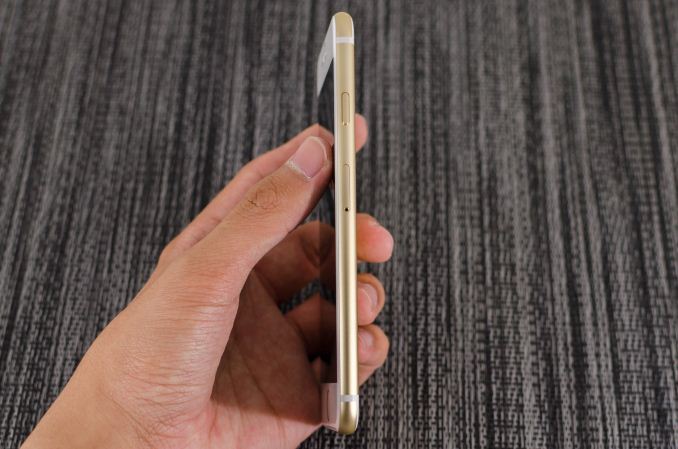
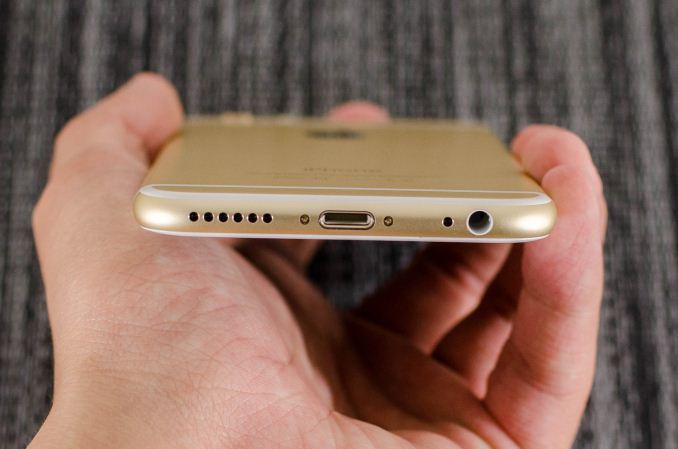
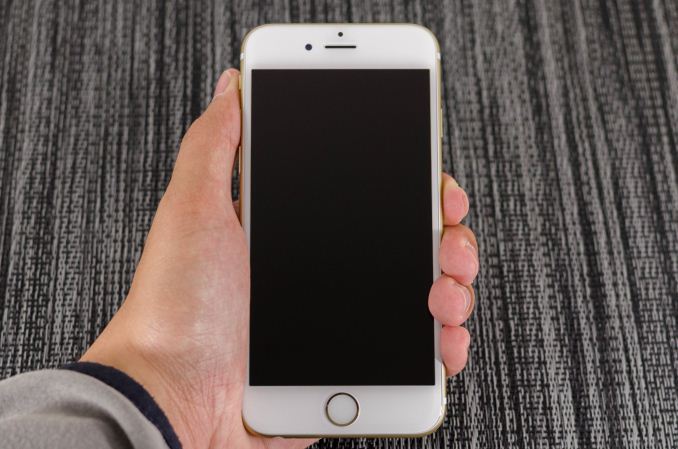
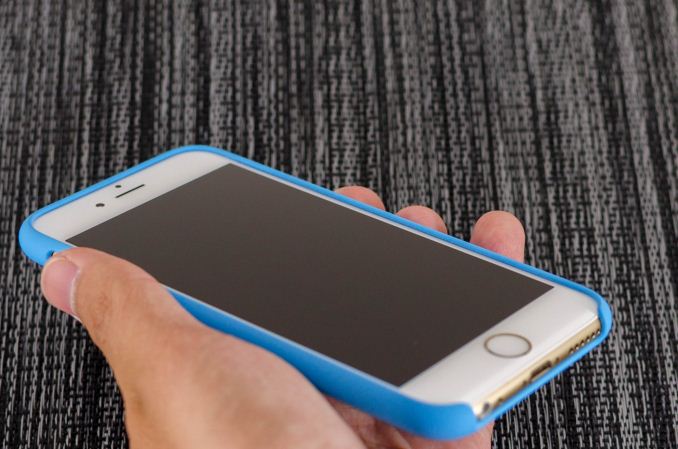








531 Comments
View All Comments
zhenya00 - Wednesday, October 1, 2014 - link
For a given battery size, nothing comes close to an iPhone for standby life. Most phones that have better battery life have SIGNIFICANTLY larger batteries. You can look at the battery tests done by Anandtech on the S5 to figure this out. The device draws 21.5mA in sleep mode (screen off). This means even with the huge 2800mAh battery it would have less than 5.5 days of pure standby (if it was used for NOTHING else). Given a battery of 1810mAh like the iPhone 6, that kind of draw would mean 3.5 days of pure standby. Even on my more power hungry 5s with a smaller battery I routinely had battery life of ~4hours use and 3+ days of standby. That just wouldn't be possible on the S5 without the oversized battery, and might not be possible on an iPhone with 2GB of RAM.lilo777 - Wednesday, October 1, 2014 - link
According to Galaxy S5 specs (http://www.gsmarena.com/samsung_galaxy_s5-6033.php... its standby time is 390 hours. That's plenty (and way more than what you came up with). I do not have the numbers but I suspect that when in standby the phone uses most energy on wireless connection. Anecdotally we know that in the areas with weak signal the phones lose battery charge very quickly. Also, having a small RAM forces iPhone to swap active applications to and from the NAND memory (save data / reload apps and data when user switches apps). NAND memory operations are more memory expensive. All in all there is no evidence that RAM size plays any significant role in battery life.kwrzesien - Tuesday, September 30, 2014 - link
Are you sure 2GB of ram would even fit on the POP? I don't know what node the ram is manufactured on, and nobody has really drilled into the die size of the ram vs the die size of the SOC, but for the phone form factor it has to fit on top. It may also drive more connectors on the SOC and it looks like the edges are already pretty full of SDRAM blocks. Personally I would like more than 1GB too, especially on the 6+, even a little bump to 1.5GB would be beneficial in those cases where swapping is happening.Now what I'm foretelling is that since the A8 for the iPads don't use POP, but have the memory next to the SOC on the mainboard, that they will have more ram. Probably 2GB, maybe more in the Pro. I expect that the A8's for iPads would be made by Samsung still, since production was rumored to be split.
Scannall - Tuesday, September 30, 2014 - link
Uh, the 'pure profit' thing again? So it's no cost at all to design your own SOC's? If it were a pure profit thing they'd just buy from Qualcomm.savage_detective - Tuesday, September 30, 2014 - link
If its not a "pure profit" thing again, why limit the ram? The only rational explanation i've read is about idle power consumption. i have no idea how much an extra gig of ram would affect i, i would think software would hit idle battery life harder than 1GB of ram.But, I certainly dont see the connection you are trying to make between the SOC cost and limiting the ram, two completely different subjects. It feels like a false equivalence on your part. The total cost of developing and creating your own SOCs does not affect the fact that if you put 1GB of ram on your phone for years you save money instead of putting 2.
doobydoo - Wednesday, October 1, 2014 - link
The real answer is that nobody knows, but from Apple's perspective there are a number of possibilities.Power is one, not just in standby. Usefulness is another. If tabs don't reload on the 5, 5S, 6 and 6+ (which they don't), then why do they need more RAM? Engineering is another, where would they find the space, what would they have to give up to make space for the RAM.
Cost of course is a factor too, but I suspect the cost of adding extra RAM would more than be outweighed by the negative PR of only having 1. So it's probably due to the reasons above.
Klug4Pres - Thursday, October 2, 2014 - link
Anand and Brian were disappointed last year that the 5S had only 1 gig of RAM - check Episode 25 of the podcast from about 1:23:35 to 1:28:00.Anand reports a 20-30% increase in memory overhead for 64-bit IOS 7 (for the 5S) versus 32-bit IOS 7 (5 or 5C). He states that memory shortage was not necessarily an issue for the 5, but that he would still have wanted more.
Brian Klug references a "power penalty" from having less RAM - the reason for this is that apps in the background (or Safari tabs) get pushed out of memory and therefore have to be reloaded, which is a power-intensive activity.
Brian also states: "amount of RAM has been the gate preventing good performance on these older devices as [the OS] gets upgraded."
This is one of the major reasons for Apple sticking to 1GB. They want to give you a reason to upgrade. The smartphone market is relatively mature now, especially the high-end segment in the developed World. Therefore manufacturers must drip-feed incremental improvements to consumers, and whack them over the head with OS "upgrades" that do mostly the same thing as in previous years, but with a higher memory footprint. Older devices face getting bogged down, or if not upgraded, they will lose security patches, and run into compatibility issues as apps become targeted at the newer devices and OS versions.
We have always seen this in the PC industry, where older devices would often have remained viable for much longer had it not been for arbitrary restrictions on maximum memory size, achieved by limiting upgrade slots, crippling chipsets and BIOSes, introduction of new memory technologies creating cost increases for older memory tech, restricting the availability of the highest capacity memory modules etc. Microsoft and Intel worked hand in hand, MS coming up with ever more bloated operating systems, which required a new upgrade cycle, Intel just doing enough to keep pace. Pointless user interface tweaking is generally the favourite way of bogging down a last-gen device, but just rev'ing some APIs will also do the trick.
In the PC space, people who did not care to present an image of affluence could get by with second-hand hardware that could be obtained very cheaply. MS at least would patch their operating systems for a decade or more. In the smartphone space, you are lucky to get 18-24 months of (viable) patches, and even then only if you stick with new Apple or Nexus devices, or possibly a few Android flagships (and Motorola?). Yet the cost of a new flagship is $600 or more. The economics of this do not look very good. Maybe this is a place where Windows Phone can compete, but it would help if MS could release phones on the latest hardware - MS/Nokia have always seemed to lag behind on SoC, and there is annoying segmentation around SD cards, mostly missing on their flagships.
To be fair to Apple, what they have done this year has also preserved some value in their older devices, because a bump to 2 GB RAM would have seen app developers increasingly neglect users with lesser amounts of memory - such users presumably spend less on apps anyway.
Applebot - Tuesday, September 30, 2014 - link
Obviously the reviewer is fishing for a sweet job contract with Apple like his predecessor and site founder Anand. I am an Apple ecosystem participant (including 6 Plus) but find his glossing over of these new phones' shortcomings ridiculous and misleading. Apple's choice to skimp out once again on RAM for a 3rd new design to pad profit margins has real and substantial negative effects on both performance and user experience with these devices. Safari browsing is a joke with paltry 1GB RAM as is intensive use graphics performance. The decision to go ever lighter and thinner with cheapened aluminum design makes the phone more fragile and less durable as well as limiting battery life. Call it like it is and quit glossing over the shortcomings. I am keeping my 6 Plus because I can't give up the larger screen and am too tied into Apple ecosystem to make a switch but they are trying my patience and wearing out my good will,savage_detective - Tuesday, September 30, 2014 - link
when will hackintosh phones be a reality ?!blackcrayon - Tuesday, September 30, 2014 - link
I don't think you understand memory usage or limits with iOS if you think 1 GB of RAM affects "intensive use of graphics" performance. Apps don't use anywhere near as much RAM as you seem to think they do.